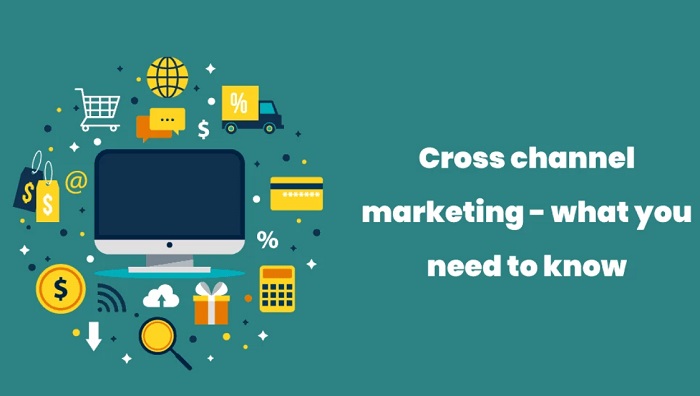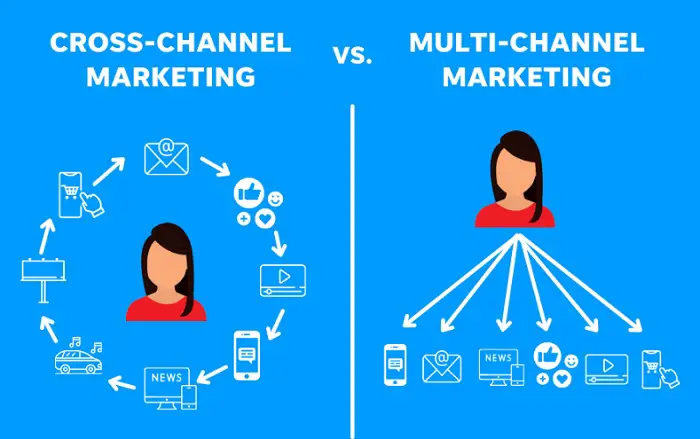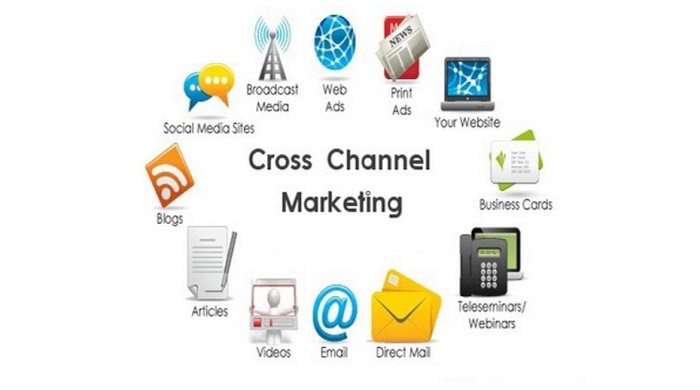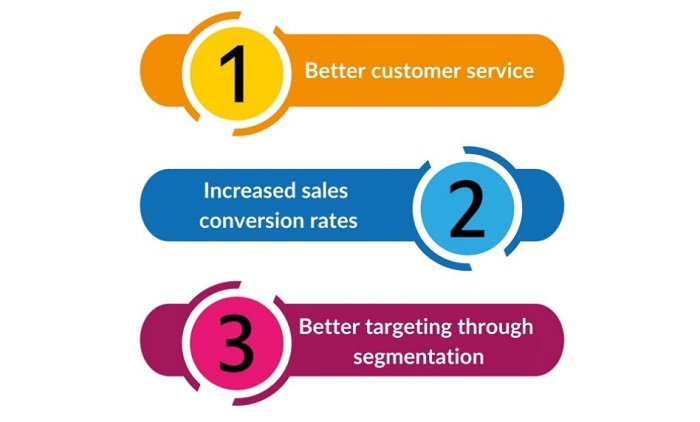Are you looking to improve your marketing strategy? One effective method is cross-channel marketing. But what is cross-channel marketing exactly? In this article, we’ll break down the basics of cross-channel marketing and how it can benefit your business.
By understanding the fundamentals, you can create a comprehensive strategy that utilizes multiple platforms to reach your target audience. Keep reading to learn more about this powerful marketing approach.
If you want to improve your marketing efforts and provide a better customer experience, keep reading to learn more about cross-channel marketing strategies and how to implement them in your business. It is also advisable to brush up your concepts on what Channel Marketing is and how products reach customers from their place of origin.
Cross-Channel Marketing: What is it?
“Cross-channel marketing” describes using numerous platforms to advertise a good or service. These outlets include social media, email, search engines, TV, and other platforms. To ensure that consumers receive uniform messaging and brand identification across all platforms, the goal is to provide a smooth customer experience.
Cross-channel marketing differs from multi-channel marketing, which uses several channels to reach customers but only sometimes ensures a cohesive customer experience. With cross-channel marketing, all channels are connected, allowing for an integrated and consistent customer experience.
How does Cross-Channel Marketing work?
Cross-channel marketing works by tracking customers’ interactions with your brand across multiple channels. You can tailor your messaging to each client by keeping note of these interactions, ensuring that they get the right message at the right moment.
You can track a customer’s behavior and give them personalized suggestions via email or social media, for instance, if they are looking through your website for a product. An improved client experience and higher conversion rates result from this tailored strategy.
Effective ways to implement Cross-Channel Marketing
- Develop a customer-centric approach: To implement cross-channel marketing effectively, it is essential to understand your customers’ needs and preferences. Use customer data to develop a customer-centric approach that ensures consistent messaging across all channels.
- Utilize automation: You can monitor client interactions and tailor your messaging using automation tools. Automating your marketing efforts can save time and money while providing your clients with tailored content.
- Utilize social media: Cross-channel marketing is made effective by using social media. Utilize social media platforms to engage with your audience, advertise your goods, and raise brand recognition.
- Optimize your website: Your website is the hub of your cross-channel marketing efforts. Optimize your website to provide a seamless customer experience across all channels. Make sure your website is mobile-friendly, fast, and easy to navigate.
- Measure and analyze: Measuring and analyzing your cross-channel marketing efforts is essential to understanding their effectiveness. Use analytics tools to track customer interactions, monitor conversion rates, and adjust your strategy accordingly.
The benefits of Cross-Channel Marketing
- Increased Brand Awareness: By leveraging multiple channels, businesses can expand their reach and get in front of a wider audience. This exposure helps build brand recognition and familiarity, which can lead to increased sales and revenue.
- Improved Customer Experience: Cross-channel marketing provides customers with a seamless and integrated experience across different touchpoints. Businesses can improve customer satisfaction and loyalty by providing a consistent message and experience.
- Better ROI: Cross-channel marketing allows businesses to optimize their marketing spend by identifying the most effective channels for driving conversions. This approach helps companies to get the most out of their marketing budget and maximize their return on investment.
- Increased Sales: By targeting customers across multiple channels, businesses can increase their chances of converting them into paying customers. This multi-channel approach allows companies to reach customers at different stages of the buyer’s journey and provide them with the information and incentives they need to purchase with Marketing Agency.
- Data-driven Insights: Cross-channel marketing enables companies to gather information from various sources and platforms. By analyzing this data, businesses can learn a lot about their consumers’ behavior, preferences, and requirements. This data can enhance customer experiences, optimize marketing efforts, and increase revenue.
- Cross-channel marketing can b companies a competitive edge by enabling them to contact customers in ways their rivals might not. Businesses can set themselves apart from competitors and stick out in a crowded market by offering a smooth and integrated experience.
- Personalization: Cross-channel marketing allows businesses to personalize their marketing messages and offers based on each customer’s behavior and preferences. This personalized approach can help businesses increase customer engagement, loyalty, and sales.
Examples of successful Cross-Channel Marketing campaigns
- Nike: Nike’s “Find Your Greatness” campaign was a great example of cross-channel marketing. The campaign leveraged TV commercials, social media, and mobile apps to promote their products and inspire athletes worldwide.
- Coca-Cola: Coca-Cola’s “Share a Coke” campaign was another successful cross-channel marketing campaign. The campaign used personalized packaging, social media, and experiential marketing to engage customers and increase sales.
- Sephora: Sephora’s Beauty Insider program integrates in-store, online, and mobile channels to provide customers with a seamless and personalized shopping experience. Customers can earn points for purchases and redeem them for rewards both in-store and online.
- Starbucks: Starbucks’ mobile app allows customers to order ahead, earn rewards, and pay for their orders in-store. The app integrates with the company’s loyalty program and social media channels, making it easy for customers to engage with the brand across multiple touchpoints.
- Amazon: Amazon’s personalized email marketing campaigns use data from customers’ browsing and purchasing history to suggest products they might be interested in. The company also uses targeted display ads and social media ads to reach customers across multiple channels.
- Disney: Disney’s MagicBand technology allows visitors to its theme parks to use a single wearable device for everything from park entry to ride reservations to payments. The technology integrates with the company’s mobile app and social media channels, creating a seamless and engaging visitor experience.
These examples demonstrate how successful cross-channel marketing campaigns use multiple channels to reach customers where they are and provide a consistent, personalized experience across all touchpoints.
Common mistakes to avoid in Cross-Channel Marketing
- Inconsistent Messaging: Inconsistency in messaging across different channels can lead to clarity and higher conversion rates. Make sure to develop a cohesive messaging strategy and ensure that it’s consistent across all channels.
- Overreliance on Technology: It’s essential to remember that other factors are at play in implementing an effective cross-channel marketing strategy. Remember to value the role that imagination and narrative play in your marketing campaigns.
- Lack of Testing and Optimization: Testing and optimization are critical in any marketing strategy but vital in cross-channel marketing. Make sure to test and optimize your efforts regularly.
FAQs
What is the difference between multi-channel marketing and cross-channel marketing?
A. Multi-channel marketing uses several channels to reach customers, while cross-channel marketing uses multiple channels to provide a cohesive and integrated customer experience.
What are some benefits of cross-channel marketing?
A. Cross-channel marketing leads to a better customer experience, higher conversion rates, and increased brand loyalty.
How can I track customer interactions across multiple channels?
A. Several tools are available, including marketing automation software, analytics tools, and customer relationship management (CRM) software.
Conclusion
Cross-platform marketing is an effective strategy for promoting your goods and services. You can give a seamless and uniform customer experience by monitoring client encounters and offering personalized messaging. Watch your engagement rates rise as you apply cross-channel marketing using these practical strategies.





